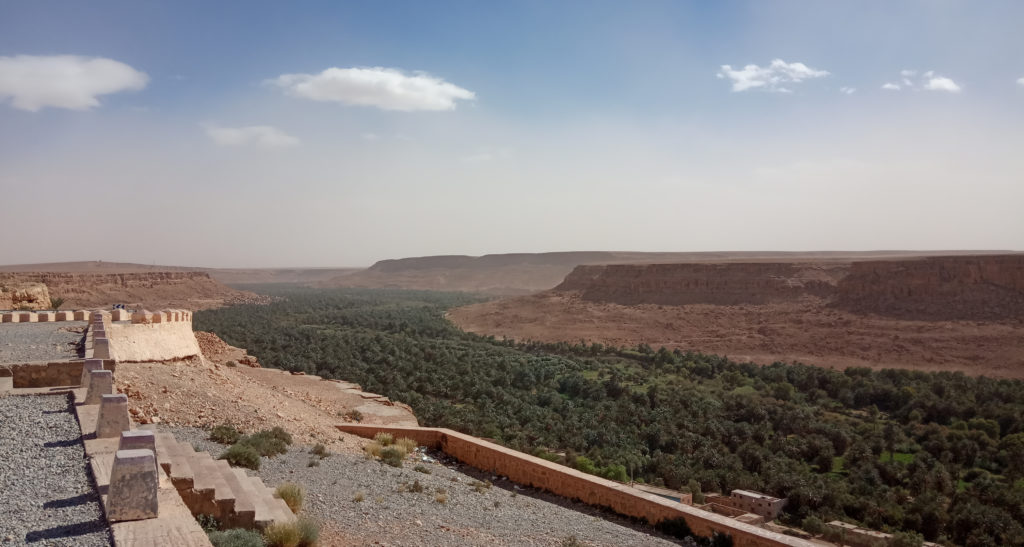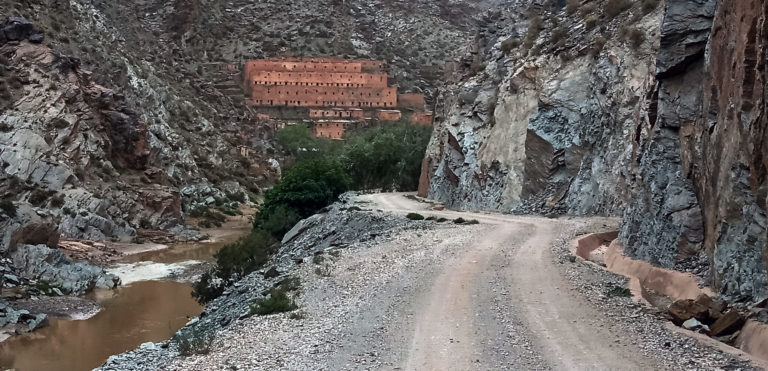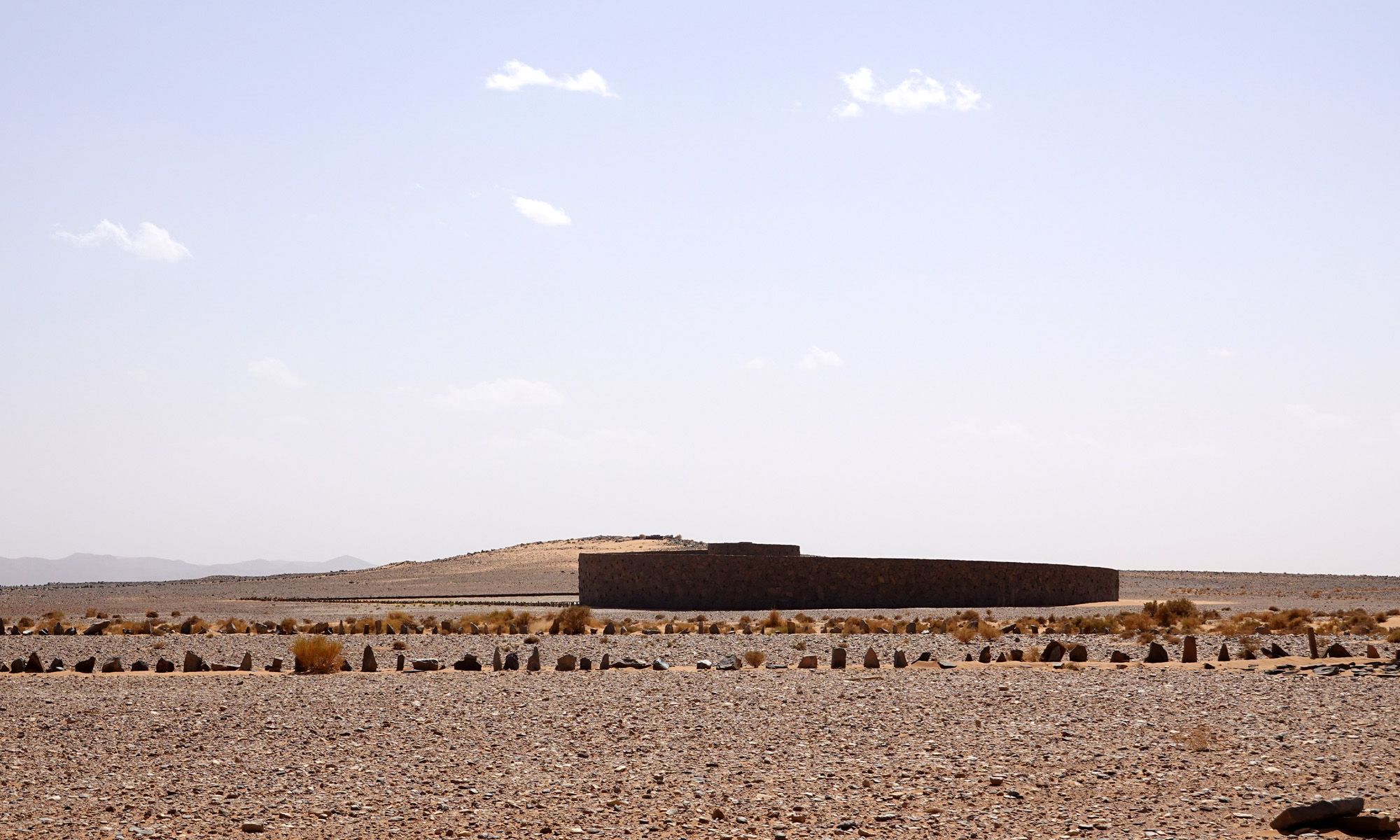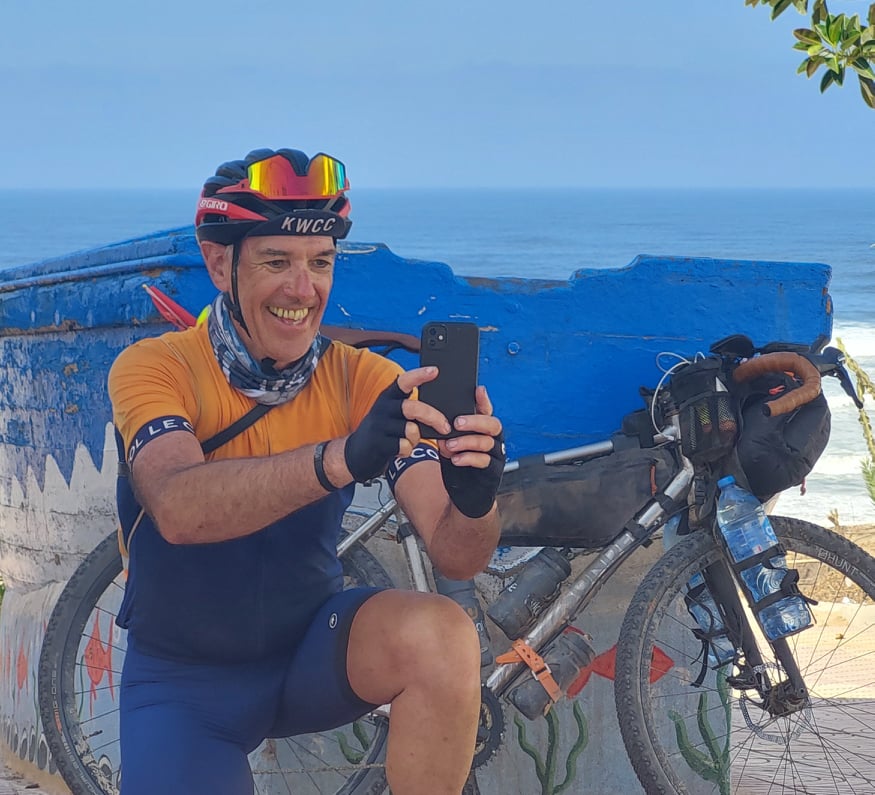Out of 15 checkpoints you select the ones you like to see. Each checkpoint has it’s own score related to the difficulty to reach the checkpoint. On the route to Sidi Ifni riders collect the points of the visited checkpoint.
Chefchaouen (Rif Mountains)
It is the chief town of the province of the same name and is noted for its buildings in shades of blue, for which it is nicknamed the “Blue City”.
It was founded in 1471 by the Moulay Ali Ben Rachid, a distant descendant of the Islamic Prophet Muhammad. The original settlement consisted of just a small fortress, now referred to as Chefchaouen’s Kasbah. The fortress was erected to help defend the area from potential attacks by Portuguese invaders; at the time, Portugal was launching attacks against northern cities and towns in Morocco.
Ahouli mines
Ahouli is an abandoned mining village in Midle Atlas. Once one of the most important lead deposits in Morocco, the nearby Ahouli and Mibladen mines are now abandoned. It is located on a valley along upper Moulouya river, about 25 kilometers north from Midelt.
The French company Penarroya operated the sites from 1928 to the 1960s, employing hundreds of Moroccan workers and producing tens of thousands of tons of lead annually, most of which was exported to France.
Tizi Tigherrhouzine 2709m
Col de Tizi Tigherrouzine is a high mountain pass at an elevation of 2,709m above sea level, located in the Drâa-Tafilalet region of Morocco. It’s one of the highest roads of the country. The climb starts at Agudal 2,340m above sea level.
Todgha Gorge
Deep in the rocky Atlas Mountains lies the dramatic scenery of the Todra Gorge (called locally Todgha Gorge), a natural oasis created by the River Todra carving its way through limestone for many centuries. The gorge looks almost prehistoric with canyon walls that reach over 400 metres in height

Valée de Ziz
The Valée de Ziz is the biggest palm oasis in Morocco. The palm trees spans over about 70km along the Ouet Ziz canyon.
La Cité d’Orion
“La Cité d’Orion” is situated on a new 55km long piste section starting south of the Valée de Ziz palm grove, one of the biggest in Maroc. The “City of Orion” was built between 1998 and 2003 by the German artist Hannsjörg Voth.
“La Cité d’Orion” is made up of 7 large towers that form a three-dimensional model of the constellation of Orion. Once again its intention is to connect the earth to the sky and more particularly to the celestial. The constellation of Orion is one of the most mythical constellations in many civilizations. It is notably associated with Osiris among the Egyptians but is also present in Sumerian, Greek (from which it takes its name) or Chinese mythology.
The arrangements of these towers are not insignificant: their dimensions have been calculated in proportion to the size and brightness of the stars. The rectangular towers are built in cob, like its previous desertic works. They are obviously observatory towers allowing to follow the course of the 7 most visible stars of the constellation.
Source: Senses Atlas
The Golden Spiral
The Golden Spiral is the second new checkpoint and located in the Marha plain a short distance after La Cité d’Orion. This immense work of art was Hannsjörg Voth second project in the Marha plain and built from 1993 until 1997 with local artisan using their hand skills in a traditional manner.
Stairway to Heaven
The Himmelstreppe (Stairway to Heaven) was built and self-financed from Hannsjörg Voth between 1980 and 1987. Fascinated by astronomy, he built a staircase whose top side walls are narrowed, creating a vertical slit facing the stars. The structure/sculpture is 19m high and has 56 steps, creating a shadow that runs all around. The interior of this monumental staircase is also accessible, as different rooms are built into the structure.
Source: Senses Atlas
La Cárcel Portuguesa
This crater was used as a film stage for a James Bond film, as well as the Brendan Fraser blockbuster film, The Mummy. The Mummy (1999) is set in Egypt, but filmed mostly in Morocco. In the southeastern Moroccan desert, an entire set was built for the fictional Egyptian city, Hamunaptra. The set for this fictional city was constructed in a dormant volcanic crater close to the real-life oasis town, Erfoud.
Erg Chebbi
In places, the dunes of Erg Chebbi rise to 150 meters from the surrounding hamada (rocky desert) and altogether span an area of approximately 28 kilometers from north to south and 5–7 kilometers from east to west lining the Algerian border.
Tizi n’Tazazert 2283m
The Tizi n’Tazazert at an elevation of 2,709m above sea level connects Ikniouen with N’Kob. The road is paved since 2021. At the summit, there are a café, a restaurant, and an auberge. 2km south of the summit is another auberge with breathtaking views.

Zagora
The gateway to the desert. Zagora is nestled in the sumptuous Draa Valley, and presents a stunning natural contrast. The panel “Tombouctou 52 jours” is the last evidence of the city’s time as a caravan station.
Erg Chigaga
With a length of approximately 40 km to 15 km wide, some dunes around a height of 60 m (170 m more than Erg Chebbi), it is the largest and wildest of Morocco.
Starting from the oasis of M’Hamid El Ghizlane it is possible to reach the dunes area, by off-road vehicle, by camel and by off-road motorbike along an old caravan trail, however the approach route is not obvious and unless you have a GPS navigation system and relevant waypoints you are advised to engage a local guide.

The blue rocks
Nestled in the magnificent Almenn valley, the village of Tafraoute is surrounded by famous blocks of pink granite. In the middle of this setting is one of the most surprising artistic creations of the region: The Blue Rocks.
In 1984, the Belgian artist Jean Vérame found inspiration for his astonishing work in the center of granite blockfield. He colored the rocks of this desert region, mainly using a lot of blue paint.
Icht – the underground village
Icht is a small town located in the Draa-Tafilalet region of southeastern Morocco. It overlooks the Jbel Bani, the nearby escarpment which often reflects beautiful orange sunsets.
From a distance, Icht appears to be a typical village of the region. Despite this, the kasbah is unique as it is located meters underground. At the ground level, small doors lead to a labyrinth of underground alleys that serve the various houses. Sometimes exceeding 3 floors. Each house is bridged by a big skylight, which illuminates and ventilates the rooms dug into the earth.
FINISH: Sidi Ifni
Sidi Ifni is a city located in southwest Morocco, on the shores of the Atlantic Ocean. It has a population of approximately 20,000 people and the economic base of the city is fishing.
Sidi Ifni served as a Spanish port city from the mid-19th century until it was ceded to Morocco in 1969. From the 1930s until the late 1960s, the town hosted a large Spanish population.
Sidi Ifni is known as a surf spot. Just a few meters from the finish you get the chance for some surf lessons.



















